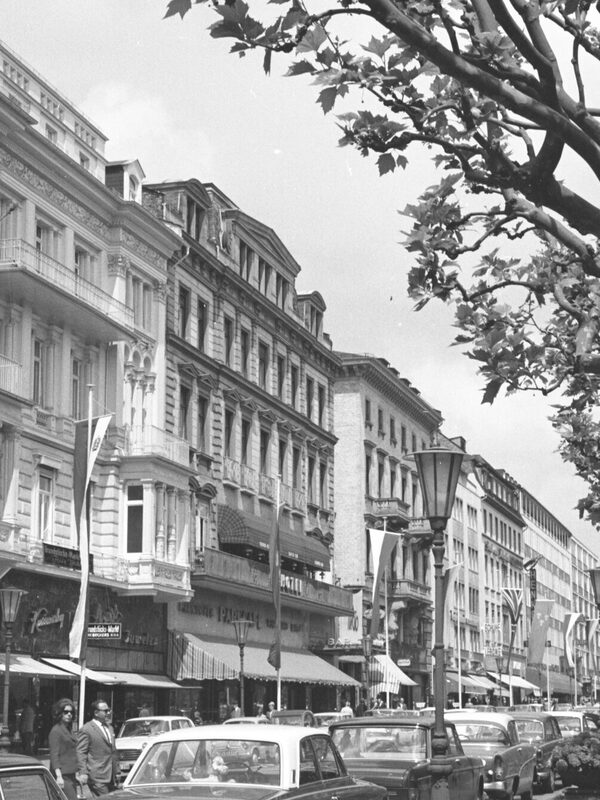Park Café
In 1915, the "Hotel du Parc et Bristol" became the "Parkhotel, Parkkaffee" on Wilhelmstraße, owned by Theodor Feilbach. After further changes in the early 1920s, the Frankfurt restaurateur Bernhard Labriola (1890-1960) took over the hotel around 1925 and set up a Viennese coffee house as well as a concert café with a cabaret and a cabaret and dance stage. The "Ufa-Lichtspiele" movie theater was also located in the building.
The Park Café soon became a popular attraction in Wiesbaden's nightlife. In the 1930s, numerous well-known artists and performers from Germany and abroad made guest appearances here. After the beginning of the Second World War, only the concert café remained open, where bands continued to perform. In addition, young jazz and swing fans met in the Park Café during the Nazi era. The members of the "Hot Club Wiesbaden", founded in 1939, met in Wilhelmstraße until 1941. This is where they played their music, whose American titles were given Germanized names to disguise them.
In the spring of 1954, the redesigned Park Café opened as the "Park-Betriebe an der Wilhelmstraße" with three bars and was able to build on its success from before the Second World War. Many famous artists performed here, including Paul Kuhn, Peter Frankenfeld, Udo Jürgens, Elvis Presley, Josephine Baker and Bill Ramsey. Others, such as Roberto Blanco, began their careers in the Park Café. In 1961, the "Park Cabaret" closed and the Scotch Club opened as the first discotheque in the Rhine-Main region.
After the death of long-time owner Orest Labriola in the early 1980s, financial problems led to the closure of the restaurant and the sale of the building to the city of Wiesbaden. In 1982, a discotheque reopened, where live bands also performed. After another closure and a three-year renovation phase, the Park Café reopened in 2006 under a new tenant. In addition to the "Park-Café" discotheque on the first floor, the Weber dance school uses the rooms on the upper floor.
Literature
Bembenek, Lothar/Ulrich, Axel: Resistance and persecution in Wiesbaden 1933-1945. A documentation. Ed.: Magistrat der Landeshauptstadt Wiesbaden - Stadtarchiv, Gießen 1990 [p. 262 ff.].
Spiegel, Margit: Wiesbadener Firmenbriefköpfe aus der Kaiserzeit 1871-1914. Factory and hotel views on business letters and invoices. 50 examples with brief company portraits, vol. 1, Wiesbaden 2003 [p. 43 ff.].
